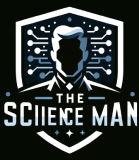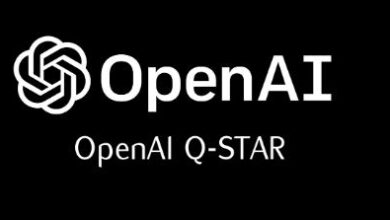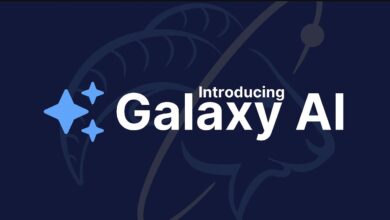Navigating the Digital Universe: Landscape of Information Technology

In our modern world, Information Technology (IT) is the beating heart of virtually every industry. From the way we communicate to how businesses operate and governments function, IT permeates every aspect of our lives. The rapid pace of technological advancement continually reshapes this landscape, creating both challenges and opportunities for individuals and organizations alike. In this expansive blog, we’ll embark on a journey through the vast realm of Information Technology, exploring its significance, current trends, and future prospects.

IT has transformed the way we teach and learn:
Understanding Information Technology
At its core, Information Technology encompasses the use of computers, software, networks, and other digital tools to store, retrieve, transmit, and manipulate data. This broad field encompasses various sub-disciplines, including:
- Networking: The foundation of IT, networking involves the design, implementation, and maintenance of systems that enable the exchange of data between devices. This includes local area networks (LANs), wide area networks (WANs), and the internet itself.
- Software Development: This involves the creation of applications, websites, and other software solutions to meet specific needs. Software developers utilize programming languages, frameworks, and methodologies to design and build functional and user-friendly products.
- Cybersecurity: With the increasing prevalence of cyber threats, cybersecurity has become a critical aspect of IT. It involves safeguarding networks, systems, and data from unauthorized access, breaches, and attacks.
- Data Management: As the volume of data generated continues to grow exponentially, effective data management becomes essential. This includes tasks such as storage, retrieval, backup, and analysis of data to derive meaningful insights.
- Cloud Computing: Cloud computing revolutionizes the way IT services are delivered and consumed. It enables users to access computing resources (such as servers, storage, and databases) over the internet, offering scalability, flexibility, and cost-efficiency.
- Artificial Intelligence (AI) and Machine Learning (ML): AI and ML technologies are transforming various industries by enabling computers to learn from data, Information Technology make predictions, and automate tasks. From recommendation systems to autonomous vehicles, the applications of AI and ML are vast and diverse.

Current Trends Shaping the IT Landscape
As we navigate the digital universe, several trends are reshaping the IT landscape and driving innovation:
- Remote Work: The COVID-19 pandemic accelerated the adoption of remote work practices, highlighting the importance of collaboration tools, cloud services, and cybersecurity measures to support distributed teams.
- Internet of Things (IoT): IoT devices continue to proliferate, connecting everything from smart home appliances to industrial machinery. This trend generates vast amounts of data, driving demand for IoT platforms and analytics solutions.
- Edge Computing: With the rise of IoT and real-time applications, edge computing brings processing power closer to the data source, reducing latency and improving efficiency. This trend enables new possibilities for applications such as autonomous vehicles and augmented reality.
- 5G Technology: The rollout of 5G networks promises faster speeds, lower latency, and greater connectivity, paving the way for innovations in areas such as autonomous vehicles, smart cities, and immersive experiences.
- Blockchain: Beyond cryptocurrencies, blockchain technology offers secure and transparent ways to record transactions and establish trust in various domains, including finance, supply chain management, and healthcare.
- Cybersecurity Challenges: As cyber threats become more sophisticated and pervasive, organizations face an ongoing battle to protect their data and systems. This has led to increased investments in cybersecurity solutions, including threat intelligence, endpoint protection, and security awareness training.
Applicaton of IT (Information Technology)
1. Healthcare
Information Technology has revolutionized healthcare in numerous ways:
- Electronic Health Records (EHR): Digital record-keeping systems enable healthcare providers to access patient information quickly and securely, leading to more efficient care delivery.
- Telemedicine: IT enables remote consultations, diagnoses, and treatment through video conferencing, improving access to healthcare services, especially in rural or underserved areas.
- Medical Imaging: Advanced imaging technologies powered by IT, such as MRI and CT scans, provide detailed insights for diagnosis and treatment planning.
2. Education
- E-Learning Platforms: Online learning platforms offer interactive courses, videos, and quizzes, providing flexible and accessible education opportunities for students worldwide.
- Virtual Classrooms: Video conferencing tools enable virtual classrooms, facilitating real-time interaction between students and teachers regardless of geographical location.
- Educational Apps and Games: Mobile applications and games make learning engaging and interactive, catering to diverse learning styles and preferences.
IT plays a crucial role in the financial sector:
- Online Banking: Internet banking services allow customers to manage their accounts, transfer funds, and pay bills conveniently from their computers or mobile devices.
- Algorithmic Trading: Automated trading algorithms analyze market data and execute trades with minimal human intervention, enabling faster and more efficient transactions.
- Blockchain and Cryptocurrency: Blockchain technology powers cryptocurrencies like Bitcoin, offering decentralized and secure digital transactions without the need for intermediaries.

3. Finance
4. Transportation
IT innovations have transformed transportation systems:
- GPS and Navigation: GPS technology provides accurate location tracking and navigation services, guiding drivers and optimizing routes for efficiency.
- Ride-Sharing Platforms: Apps like Uber and Lyft utilize IT to connect passengers with drivers, facilitating convenient and affordable transportation options.
- Autonomous Vehicles: Self-driving cars rely on advanced sensors, AI algorithms, and real-time data processing to navigate roads safely and efficiently.
5. Manufacturing
IT has modernized manufacturing processes:
- Industrial IoT (IIoT): Connected sensors and devices gather real-time data on equipment performance and production processes, enabling predictive maintenance and optimization.
- Robotics and Automation: Robots equipped with AI and machine learning capabilities automate repetitive tasks, improving efficiency, precision, and safety in manufacturing operations.
- Supply Chain Management: IT systems track inventory, manage orders, and optimize logistics, streamlining the entire supply chain from production to distribution.
6. Entertainment
IT innovations have transformed the entertainment industry:
- Streaming Services: Platforms like Netflix, Spotify, and YouTube deliver on-demand access to movies, music, and videos over the internet, revolutionizing content consumption.
- Gaming Technology: High-performance graphics, virtual reality, and cloud gaming services offer immersive gaming experiences with realistic visuals and responsive gameplay.
- Social Media Platforms: Social networking sites and apps enable users to connect, share content, and engage with communities worldwide, shaping trends and culture.
7. Agriculture
IT solutions are optimizing agricultural practices:
The Future of Information Technology
- Precision Farming: Sensors, drones, and GPS technology provide real-time data on soil conditions, weather patterns, and crop health, enabling farmers to make data-driven decisions for improved yield and resource efficiency.
- Smart Irrigation Systems: IoT-enabled irrigation systems monitor moisture levels and weather forecasts to deliver water precisely where and when it’s needed, conserving water and maximizing crop productivity.
- Crop Monitoring and Management: Satellite imagery and AI algorithms analyze crop health and detect pest infestations or diseases early, allowing farmers to take timely preventive measures

Looking ahead, the future of Information Technology promises even greater advancements and transformations. Some key areas to watch include:
- Quantum Computing: Quantum computing holds the potential to solve complex problems that are currently intractable for classical computers. While still in the early stages of development, quantum computing could revolutionize fields such as cryptography, drug discovery, and optimization.
- Augmented Reality (AR) and Virtual Reality (VR): AR and VR technologies are blurring the lines between the physical and digital worlds, offering immersive experiences in gaming, entertainment, education, and beyond.
- Biotechnology and IT Convergence: The convergence of biotechnology and IT is opening up new frontiers in areas such as personalized medicine, genomics, and bioinformatics. This interdisciplinary approach holds promise for advancing healthcare and addressing global challenges.
- Ethical and Regulatory Considerations: As technology continues to advance, ethical and regulatory considerations become increasingly important. Issues such as data privacy, algorithmic bias, and digital rights demand thoughtful policies and frameworks to ensure responsible innovation.
- Sustainability and Green IT: As concerns about climate change escalate, there is a growing emphasis on sustainable IT practices. This includes reducing energy consumption, minimizing electronic waste, and promoting eco-friendly technologies.

Information Technology is a dynamic and multifaceted field that shapes the way we live, work, and interact with the world around us. From the foundational principles of networking and software development to cutting-edge innovations in AI, IoT, and quantum computing, IT continues to evolve at a breathtaking pace. By staying informed about current trends and embracing emerging technologies responsibly, individuals and organizations can harness the power of IT to drive positive change and create a better future for all. As we journey further into the digital age, the possibilities are limited only by our imagination and ingenuity.




